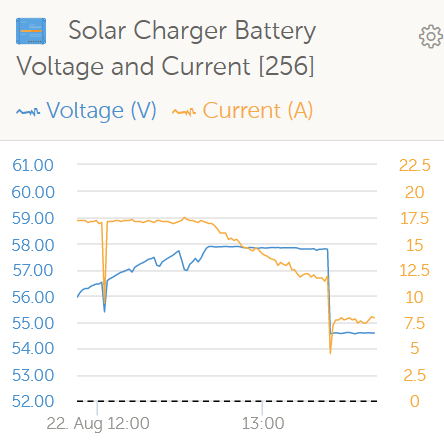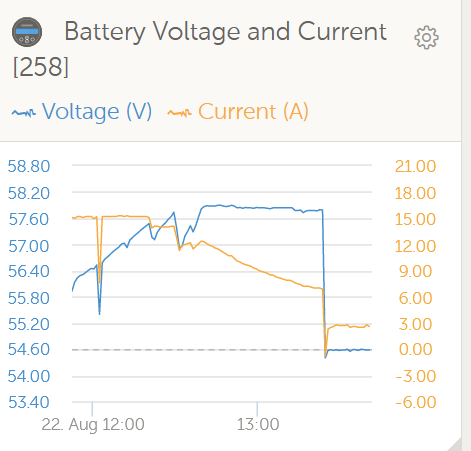Hi, I do have two AGM batteries with a total of 190Ah, 200W Solar Panels and a SmartSolar 75/15. It happens that my batteries go down to 50% and due to not enough sun the charging back to 100% takes a few days. But then only 50 minutes of adaptive absorption is applied. As far as I understand 4 hours would be preferable after a discharge to 50%. But as there are other days where the batteries only move down to around 80% and are fully charged again the same day, 4 hours absorption may not be the best option for every day? Do I understand correctly? And what is the best setting to use? Should I change the setting once a while to get a full 4 hours absorption?

The image shows a 50 minute absorption time today, after 6 days of bulk loading. The batteries where down to around 50% on the 17th. Thats when I turned off the fridge to get them charged again.


 What the batts are getting.. smoother A curve, which I hope you can see starting to level off just before 7A (the mppt Tail setpoint). Then it trips to Float.
What the batts are getting.. smoother A curve, which I hope you can see starting to level off just before 7A (the mppt Tail setpoint). Then it trips to Float.